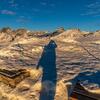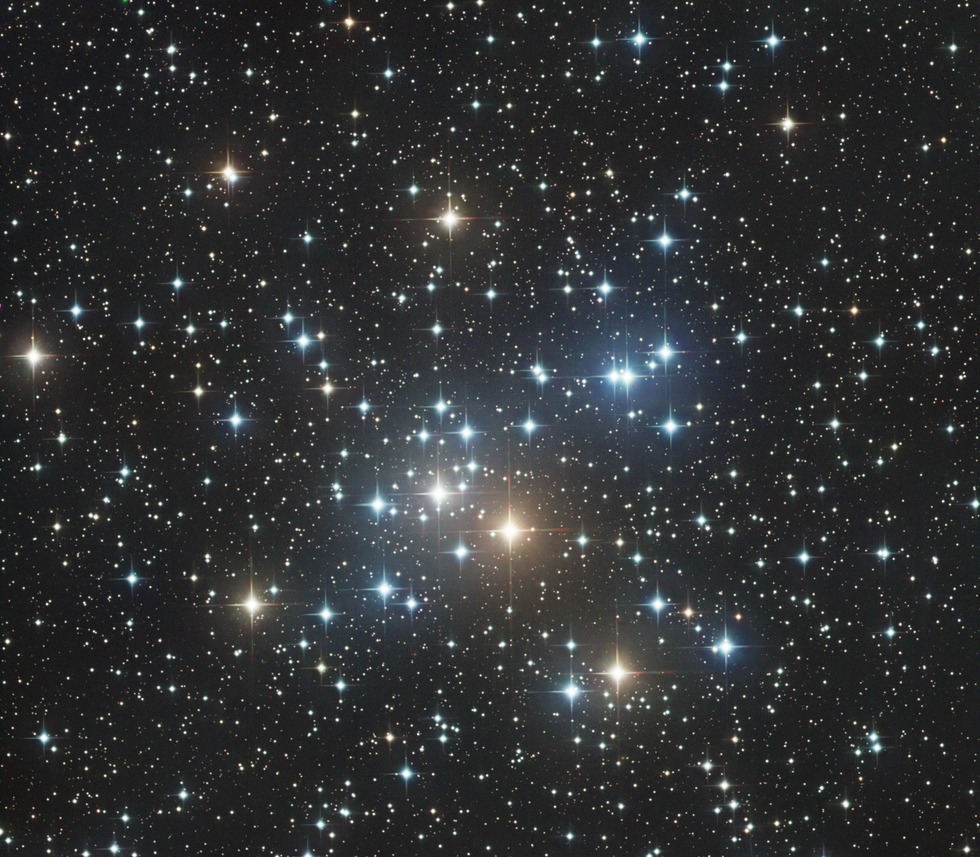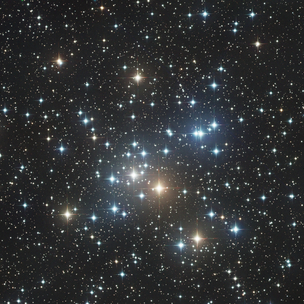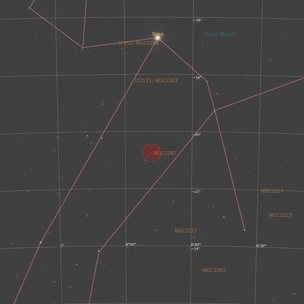M41 - The Little Beehive Cluster
0
6
M41 - The Little Beehive Cluster
Messier 41 (also known as M41 or NGC 2287) is an open cluster in the constellation Canis Major, sometimes referred to as The Little Beehive Cluster. It was discovered by Giovanni Batista Hodierna before 1654 and was perhaps known to Aristotle about 325 BC. It lies about four degrees almost exactly south of Sirius, with which it forms a roughly equilateral triangle with Nu2 Canis Majoris to the west—all three figure in the same field in binoculars.
The cluster covers an area about the size of the full Moon. It contains about 100 stars, including several red giants the brightest of which has spectral type K3, apparent magnitude 6.3 and is near the center, and some white dwarfs. The cluster is estimated to be moving away from us at 23.3 km/s. The diameter of the cluster is 25–26 light-years (7.7–8.0 pc). It is estimated to be 190 million years old, and cluster properties and dynamics suggest a total life expectancy of 500 million years for this cluster, before it will have disintegrated.
(Source: Wikipedia)
The cluster covers an area about the size of the full Moon. It contains about 100 stars, including several red giants the brightest of which has spectral type K3, apparent magnitude 6.3 and is near the center, and some white dwarfs. The cluster is estimated to be moving away from us at 23.3 km/s. The diameter of the cluster is 25–26 light-years (7.7–8.0 pc). It is estimated to be 190 million years old, and cluster properties and dynamics suggest a total life expectancy of 500 million years for this cluster, before it will have disintegrated.
(Source: Wikipedia)
SPECIFICATIONS
Telescope
Planewave CDK24
Camera
FLI PL 9000
Location
El Sauce Observatory, Chile
Date of observation
February/November 2022
Filters
Astrodon LRGB
Processing
Processed in PixInsight and Photoshop





